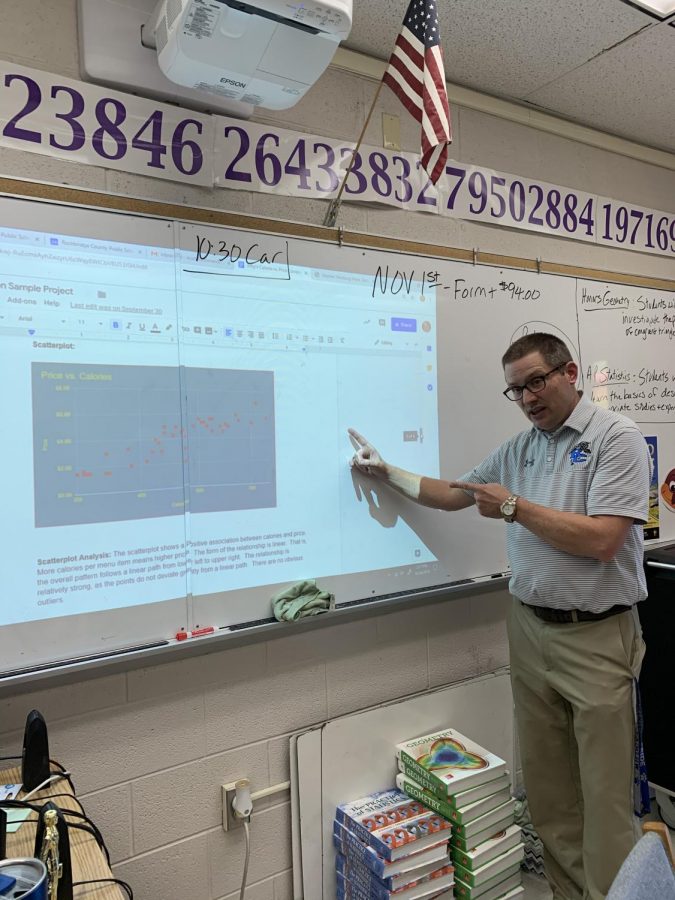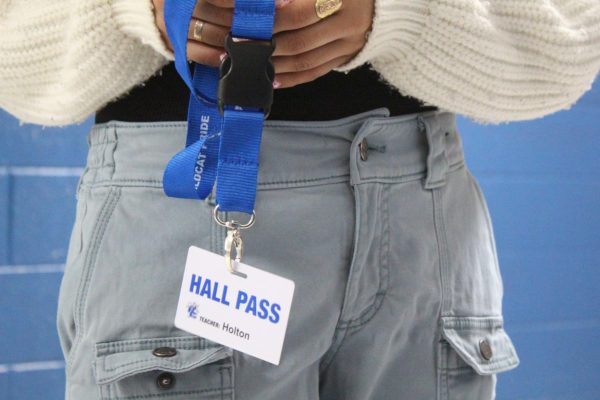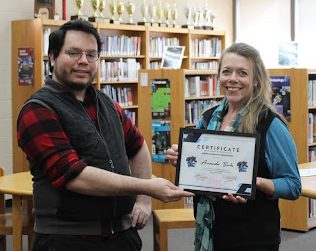AP Statistics Integrates Projects into the Curriculum
AP Statistics teacher Scott Fleshman shows his students how to create scatterplots for their projects.
October 25, 2019
AP Statistics teacher Scott Fleshman has designed his class to be more hands on by integrating projects into the statistics course. For each unit taught, a project correlating to that unit is assigned. The projects are issued in lieu of quizzes and are also given as a quiz grade.
“I decided to scrap the quiz idea and only do projects and tests. I determined as we have gone through the first two years of the program, that the students who are doing the absolute best are probably still going to get a four or a five on the AP exam no matter what I do,” said Fleshman. “The students at the lower end of that, who will potentially get twos or threes, can get a better grasp if they are doing things in context with a project format.”
Fleshman came up with the idea after considering statistics courses he has taken and understanding what makes some better than others.
“I’ve taken statistics classes that weren’t in context, and I have struggled with them. When I have taken statistics classes that were in context, I’ve learned a lot more personally. I’m going from personal experience in realizing that when things are in context and students are doing things for real, like with calculations that would mean something to them, it puts investment into them,” said Fleshman. “They have choice in their projects, so they can get can get the concepts by doing things on their terms with processes that are of interest to them, which helps to ingrain it in them.”
Fleshman has already assigned three projects for this school year, which have turned out successfully.
“So far, I think it has worked really well. We did a project in the first unit that involved finding categorical and quantitative data and making appropriate graphs for them. In the next unit, we did a project where students asked a quantitative question, compiled data, and then looked to see whether the data fit a normal distribution, which is something we learned about in class,” said Fleshman. “Now in the third unit, we are doing a project on bivariate data where there’s a cause and effect relationship, and the students are analyzing whether there’s a linear relationship.”
Fleshman’s projects require skills from previous math classes, which benefits the statistics course of study.
“In all these, there are contextual things that the students have learned in other classes, and they are able to pull from these experiences in other classes and make them more real in the statistics curriculum.”
Senior Errin Harrington is one of the students in Fleshman’s AP Statistics course who has completed these project assignments.
“I think that the projects are more hands on, so they allow you to draw the graphs and see how they work, rather than just putting it into a program and it doing it for you,” said Harrington. “I enjoy finding new research and being able to go in on the topic that I like.”
Harrington feels that these projects differ from other math assignments by allowing the students to learn outside of the classroom environment.
“It’s quite different from other math assignments because it requires a lot more research and in depth things that you need to do, rather than just surface stuff,” said Harrington. “You learn while researching, rather than just learning in class.”
















